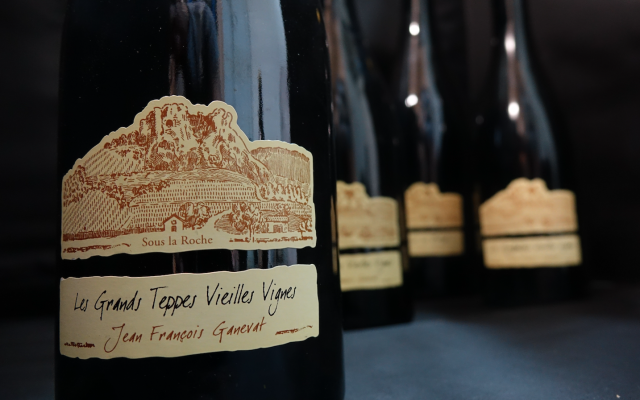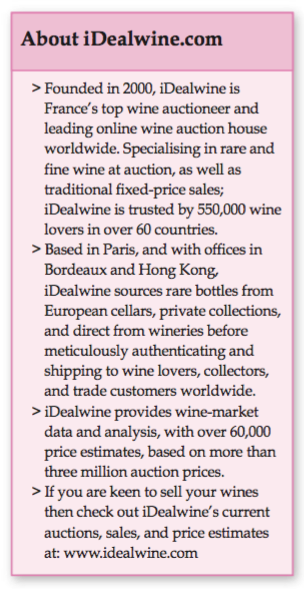This website uses cookies so that we can provide you with the best user experience possible. Cookie information is stored in your browser and performs functions such as recognising you when you return to our website and helping our team to understand which sections of the website you find most interesting and useful.
Fine wine profile: Jean-François Ganevat
Cult Jura producer Jean-François Ganevat comes from a winemaking dynasty, and his labels are becoming more sought after, making them a popular and increasingly in-demand choice in the secondary market.

A tasting with cult winemaker Jean- François Ganevat – FanFan to his friends – is a memorable experience. Upon arrival at his 13-hectare domaine in La Combe Rotalier, in the southernmost part of the Jura in France, you will be given a whistlestop tour of the myriad outhouses and picturesque cottages that together house the chai and cellars, his wines occupying the better part of the hamlet.
Ganevat is the 14th generation to work the family’s land, having learnt at his father’s side from 1982 until 1989. Yet it was in Burgundy that he gained a formal wine education, initially at the oenology school in Beaune, then as cellar master at one of Chassagne-Montrachet’s greatest domaines, Jean-Marc Morey.
When visiting Ganevat’s domaine, it doesn’t take long to notice that the place is steeped in Burgundian tradition, its influence clear from the focus on single parcel cuvées that highlight the estate’s many micro-terroirs, to the rigorous topping up of white wine barrels – a distinct move away from the Jura’s more traditional sous voile winemaking.

White wines are fermented and matured in the same barrels, often for at least two years, and each cuvée undergoes a highly individualised élevage. No new oak is used, and Jean-François has also been experimenting with unlined clay amphoras since 2014. For the reds, the grapes are destemmed – by hand, with scissors – and are fermented using carbonic maceration before ageing in barrels.
A fervent perfectionist, his methods have inspired winemakers in the area, all seeking to showcase the potential of their small, alpine region. All machinery is eschewed at the domaine, so a team of one person per hectare, Ganevat included, works the vineyard, ensuring that the labour-intensive biodynamic farming of each site is carried out meticulously.
Soils are made up of a complex patchwork of schist, chalk and marl, and many of the vines are at least 50 years old, some over 100. Yields are low. This brief glimpse into the runnings of the Jura’s darling domaine is enough to whet your appetite for the tasting – and you will need one for what is to come. Ganevat dips out of the tasting room, only to re-emerge moments later with sister and business partner Anne in tow, innumerable bottles in their hands.
The tasting begins with the domaine’s négoce cuvées, a wide variety of weird and wonderful single-varietal cuvées or blends. Known for his penchant for experimentation, Ganevat often makes more than 40 cuvées per year, each individual in character but highly consistent in quality.
It’s not uncommon, for instance, to encounter blends of the region’s ancient, outlawed grape varieties, Enfariné
Noir, Petit Bécland, Scévillard, and Geusch, among others, released as Vins de France. Further proof (as if it was needed) that wine is a never- ending journey of discovery.
While Ganevat speaks proudly of his négoce wines – wines he describes as ‘glou-glou’, or easy-drinking – it’s the domaine’s releases that have captured the world’s attention and that winelovers are seeking at auctions. First, you need to taste pale, ethereal reds: his Enfant Terrible, a Poulsard with a nose of wild strawberry; En Billat, a delicate Pinot Noir with a lace-like mouthfeel; and the floral, at once light and velvety-textured Trousseau Les Corvées.

Most of his red cuvées fetch prices of around €50 (£43) at auction, but in 2021 we expect to see hammer prices rise. For example, a 2016 bottle of En Billat sold for €74 in January.
PURITY AND INTENSITY
The white wines – renowned for their purity, intensity and balance – are Ganevat’s most celebrated expressions, reaching their culmination with the highly rare Les Vignes de Mon Père, a Savagnin aged for 10 years, produced from the domaine’s oldest vines, planted by Jean-François’ father in 1930. Undoubtedly one of the best wines in the Jura, if not the world, the 2005 vintage was awarded 100 points by Robert Parker.
These are among the most expensive wines of the Jura, second only to Pierre Overnoy, and prices continue to increase due to the extreme scarcity. Les Vignes de Mon Père unfailingly sells for €300, no matter the vintage. The 1998 recently went under the hammer for €450.
Many other cuvées, including Les Chalasses Marnes Bleues, a Savagnin aged for three years in demi-muids, are currently selling for over €100. Les Gryphées Vieilles Vignes, produced from 80-year-old Chardonnay vines, previously priced at just €50, has doubled in value in the last year.
As one of France’s most well-known proponents of natural winemaking, his discourse avoids dogma but is unequivocal: work is done as naturally as possible because that’s how the best wine is made, in his opinion, and small amounts of sulphur are only added when absolutely necessary.
These idiosyncratic, elusive wines – along with Jean-François’ charm – have taken the wine world by storm. As the world’s love affair with the Jura shows no signs of abating, a combination of soaring reputation and small production levels have encouraged oenophiles to look to secondary channels, particularly the auction market. Being able to taste his wines is becoming increasingly difficult, but we can assure you that every sip will make your efforts worthwhile.

